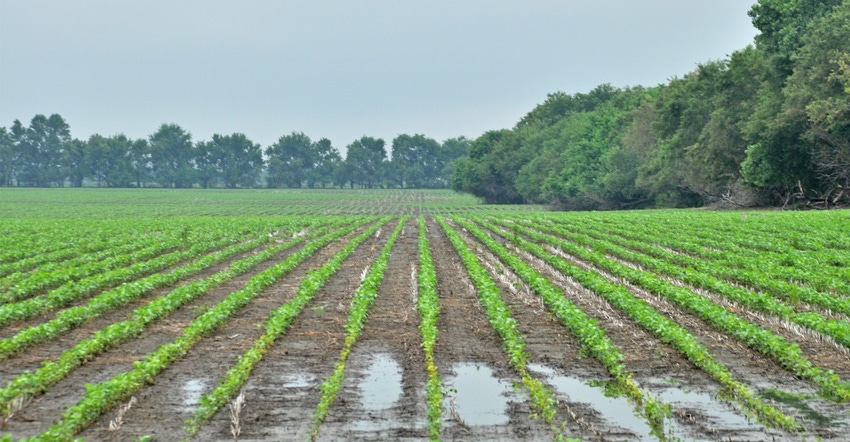
If you were hoping the weather woes of the 2019 season were over, hang on. It’s not harvest yet, and if forecasts prove correct the fall harvest may be a stinging repeat of last year.
The 30-day forecast issued July 31 by the National Climate Prediction Center predicts below-average temperatures and above-average rainfall. If accurate, that would translate to a cool, wet August — maybe not the worst thing we could ask for late-planted corn and soybeans, but not so good for late-planted cotton, which needs warm days to mature.
The 90-day outlook for August, September and October shows most of the upper Midwest with an equal chance of above- or below-normal temperatures, with the southern half of Kansas having about a 30% chance of above-average temperatures. Precipitation, on the other hand, is forecast to be solidly above normal in all of Kansas, Nebraska and the Dakotas, as well as the eastern half of Iowa and Minnesota.
After a soggy harvest last fall, a soggy planting season last spring and a soggy growing season, a soggy fall harvest isn’t exactly what farmers are hoping for.
The picture is worrisome enough for forecasters at AccuWeather that its crop production analysis predicts a significant decline from last year’s corn and soybean yield.
AccuWeather is predicting the corn yield will be 13.07 billion bushels, a decline of 9.3% from 2018. The organization predicts soybean yield of 3.9 billion bushels, an even greater decline from 2018’s final soybean numbers. It would be a drop of 14.1% from the final figure of 4.544 bushels, the lowest yield since 2013.
AccuWeather’s yield estimates center on forecasts for projected acres harvested with analysts concerned that late-planted crops either won’t yield well or could be seriously impacted by on-time frost.
AccuWeather meteorologists believe there is a greater-than-average chance of a frost occurring when it normally does. “Most years, that’s not a story,” says AccuWeather senior meteorologist Jason Nicholls, “but this year it could be.”
Here’s why: “This year, with a significant percentage of corn and soybeans not likely to be safe from a frost since they’re still growing, if you get a frost when the crop is not mature then you will damage some of the commodity and you could get some losses,” Nicholls says. “So, we are concerned.
“And an on-time frost would be sometime in early to mid-October, and that would cause some damage if it were to happen.”
Meanwhile, the National Oceanic and Atmospheric Administration has declared that the 2019 El Niño is officially over. Forecasters say conditions are currently neutral and expected to remain neutral through the winter of 2019-2020.
The end of the El Niño influence points toward an active Atlantic hurricane season, which continues through Nov. 30.
The official forecast is for 10 to 17 named storms, 5 to 9 of which will become hurricanes with 2 to 4 becoming major hurricanes with winds of 111 mph or greater. The forecast does not predict whether any of those will make landfall or where they might hit because the direction of hurricane movement is determined by shorter term conditions that are only predictable in the short term.
Forecasters also said that the lack of an El Niño or La Niña makes predicting weather conditions through the winter more difficult because the predictable effects of those events are absent.
About the Author(s)
You May Also Like






